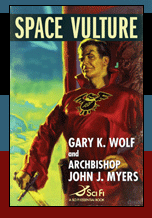 |

|
||||
The History of Space Hawk
While stories by other authors have approached this same aesthetic, the Hawk Carse series takes the premise to the extreme. Hawk Carse, "the greatest adventurer in space," "he of the spitting ray gun and the phenomenal draw," is so fast and so accurate with either hand that in face-to-face duels he permits his enemies to draw their weapons before he shoots neat holes in their foreheads. Four- and five-to-one odds are nothing to the Hawk. In this expertise the Hawk excels his cowboy prototypes. Carse is cold, icy, and passionless, except for anger when harassed by badmen. For his trusty steed the Hawk has the Star Devil, the fastest ship in space, designed by his friend and associate Master Scientist Eliot Leithgow. For a faithful companion, the Hawk has the giant black man Friday. The Hawk's ultimate purpose is revenge for an injury done to him in the past, a wound that necessitates his wearing his hair in bangs over his forehead. (Is it possible J.K. Rowley has read a Hawk Carse story or two?) The Hawk is also greatly concerned to clear the name of his friend Leithgow, who has been framed for a crime. The Hawk's counterbalance and relentless foe is the diabolic Eurasian scientific genius Ku Sui. A monster of evil, he is the overlord of gangs of space pirates and similar criminals. He is the master of strange knowledges and tortures, and only the Hawk can stand against him. --E.F. Bleiler's Science Fiction: The Gernsback Years
The Hawk's First Flight
Hawk Carse, the hero of Space Hawk was created by Harry Bates and Desmond W. Hall under the pseudonym Anthony Gilmore. He was introduced in Hawk Carse, a novelette, in the November 1931 issue of Astounding Stories. Other stories in that issue included Raiders Invisible by D. W. Hall; The Planetoid of Peril by Paul Ernst; The Terror From the Depths by Sewell Peaslee Wright; Spawn of the Comet by H. Thompson Rich; and Brood of the Dark Moon (conclusion of a four-part serial) by Charles W. Diffin. There were also letters from S. P. Wright, Forrest J. Ackerman and others. D.W. Hall, who wrote the issue's lead story, was also Desmond W. Hall, co-writer of Hawk Carse. So Hall had two stories in this issue which was not unusual. Throughout pulp history one or two writers would pseudonymously write multiple stories for a single issue. There were even cases where one writer would do them all. Famous pulp science fiction artist H.W. Wesso (Hans Waldemar Wessolowski) painted the cover illustrating Raiders Invisible. Wesso painted all twelve Astounding Stories covers that year. Who Is Anthony Gilmore?Starting in 1932, when word first got out that Anthony Gilmore wasn't a real person, was in fact two people, arguments about Gilmore's true identities raged in the leading early fanzine Fantasy Magazine |
u | |||
| The Book | The Story | The Characters | Two Boys | The Authors | The Origin | New Pulp Traditions Articles | Reviews | The Sonic Room | Purchase | Contact Us © 2007-2011 Gary K. Wolf and Archbishop John J. Myers. All rights reserved. Privacy Policy |
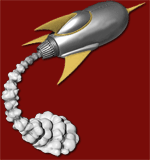
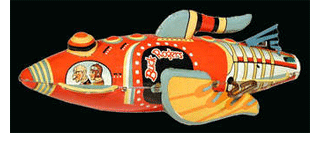 The Hawk Carse stories, which are dated vaguely as in the period A.D. 2117-2148, are for all practical purposes traditional pulp Western stories transplanted into space with the addition of an Oriental villain in the mode of Sax Rohmer's Dr. Fu-Manchu.
The Hawk Carse stories, which are dated vaguely as in the period A.D. 2117-2148, are for all practical purposes traditional pulp Western stories transplanted into space with the addition of an Oriental villain in the mode of Sax Rohmer's Dr. Fu-Manchu.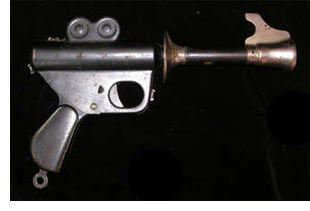
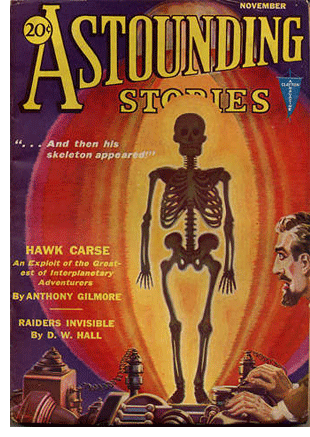 The November 1931 issue of Astounding Stories marked the first appearance of
The November 1931 issue of Astounding Stories marked the first appearance of